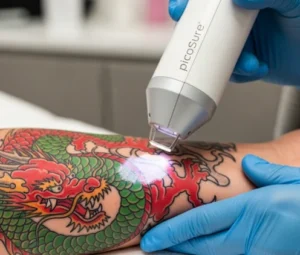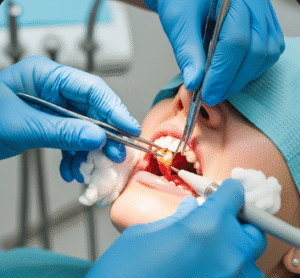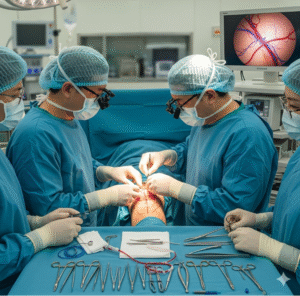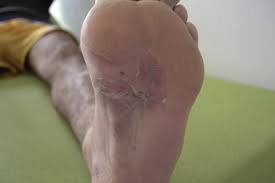What It Is
Breast implant exchange is a surgical procedure to replace existing breast implants with new ones. This may be done to change the size, shape, or type of implant, or to correct complications such as capsular contracture, implant rupture, or dissatisfaction with previous results.
In Korea, breast implant exchange is commonly performed with scar-minimizing techniques, advanced implant options, and sometimes combined procedures such as a breast lift or fat grafting to achieve natural, long-lasting results.
Why It’s Done
Patients undergo breast implant exchange because:
- They want a different size or shape for aesthetic reasons.
- The implants have reached their recommended lifespan (typically 10–15 years).
- Complications such as rupture, leakage, or capsular contracture have occurred.
- They want to switch to a newer implant material or texture.
- They are dissatisfied with the look or feel of their current implants.
Good candidates include:
- Women who already have implants and want or need a change.
- Patients in good overall health with realistic expectations.
- Individuals experiencing discomfort or cosmetic dissatisfaction from their implants.
Alternatives
- Implant removal without replacement (explant surgery) for patients who no longer want implants.
- Fat transfer augmentation for a natural enhancement without implants.
- Observation if no issues exist and patients are satisfied with current implants.
Preparation
Before breast implant exchange in Korea, patients will:
- Undergo consultation with 3D imaging simulations to preview results.
- Have breast imaging (ultrasound or MRI) to check implant condition.
- Stop smoking and alcohol 2–4 weeks before surgery.
- Avoid blood-thinning medications and supplements.
- Discuss implant options (silicone, saline, anatomical, round, or hybrid).
How It’s Done
- Anesthesia: General anesthesia is typically used.
- Incisions: Usually made through existing scars (inframammary fold, periareolar, or axillary).
- Implant removal: Old implants are carefully removed.
- Capsule management: If necessary, capsulotomy (release) or capsulectomy (removal of scar tissue) is performed.
- Replacement: New implants are placed in the same or a different pocket (subglandular, submuscular, or dual-plane).
- Closure: Sutures and dressings applied.
- Duration: 2–4 hours depending on complexity.
Recovery
- First week: Swelling, tightness, and mild pain are common; a support bra is worn.
- Return to activities: Light activities in 5–7 days; strenuous exercise avoided for 4–6 weeks.
- Healing: Swelling improves within weeks, with final results visible after 2–3 months.
- Longevity: Modern implants often last 15 years or longer with proper care.
Possible Complications
- Capsular contracture recurrence.
- Implant rupture or leakage in the future.
- Infection or delayed wound healing.
- Visible scarring, though minimized with Korean techniques.
- Changes in nipple or breast sensation.
- Rare risks: asymmetry or need for further revision.
Treatment Options in Korea
Diagnosis
Korean surgeons use breast ultrasound, MRI, and 3D analysis to evaluate implant condition and plan surgery.
Medical Treatments
- Non-surgical management of minor cosmetic concerns (limited effect).
- Pain and inflammation management for mild discomfort without implant exchange.
Surgical or Advanced Therapies
- Simple implant exchange for patients seeking new size or style.
- Implant exchange with capsulectomy for capsular contracture or rupture.
- Implant exchange with mastopexy for patients with sagging.
- Hybrid augmentation (implants + fat transfer) for natural enhancement.
Rehabilitation and Support
- Scar care with silicone gels or laser treatment.
- Regular imaging follow-ups to monitor implant condition.
- Lifestyle and weight management guidance to maintain results.
- International patients benefit from Korea’s cutting-edge implant technology, surgical artistry, and personalized aftercare services.













